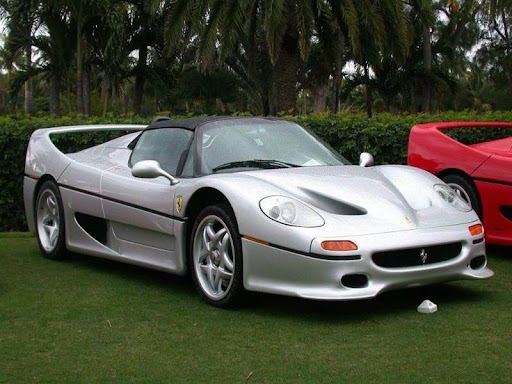Ferrari f50
That fact is often considered appropriate, since the F40 represented a return to the idea of a road car that would be competitive on the race track. The F50, introduced in 1995, is a continuation of the concept.
Cost and exclusivity are also trademarks of a supercar. The F50 was limited to 349 units, the last which left the Maranello factory in July 1997. Why 349? The official answer from the factory is that their marketing research estimated that they could sell 350, so they made one less to keep the ownership competition juices flowing. Others suspect that since their closest competitor, the McLaren F1 was scheduled to build 350 units, 349 would give the Ferrari a slight edge. In the supercar games, no quarter is given. 55 are scheduled for US customers, where the car is legal for sale in all 50 states.
The F50 was a homologation car meant to validate the 333-SP in IMSA competition. As Ferrari were wont to do, they managed to get the 333-SP racing in 1994 merely on the promise that the F50 would be built, and IMSA were so happy to have Ferrari that they overlooked the fact that no F50 cars had yet been produced when the 333-SP went racing. The 333-SP won constructors and drivers IMSA Championships in 1995, and all sides were happy. IMSA got Ferrari, Ferrari got another championship, and Ferrari enthusiasts got a successor to the F40
 ferrari f50 silver
ferrari f50 silver ferrari f50 wallpaper
ferrari f50 wallpaper
Post a Comment